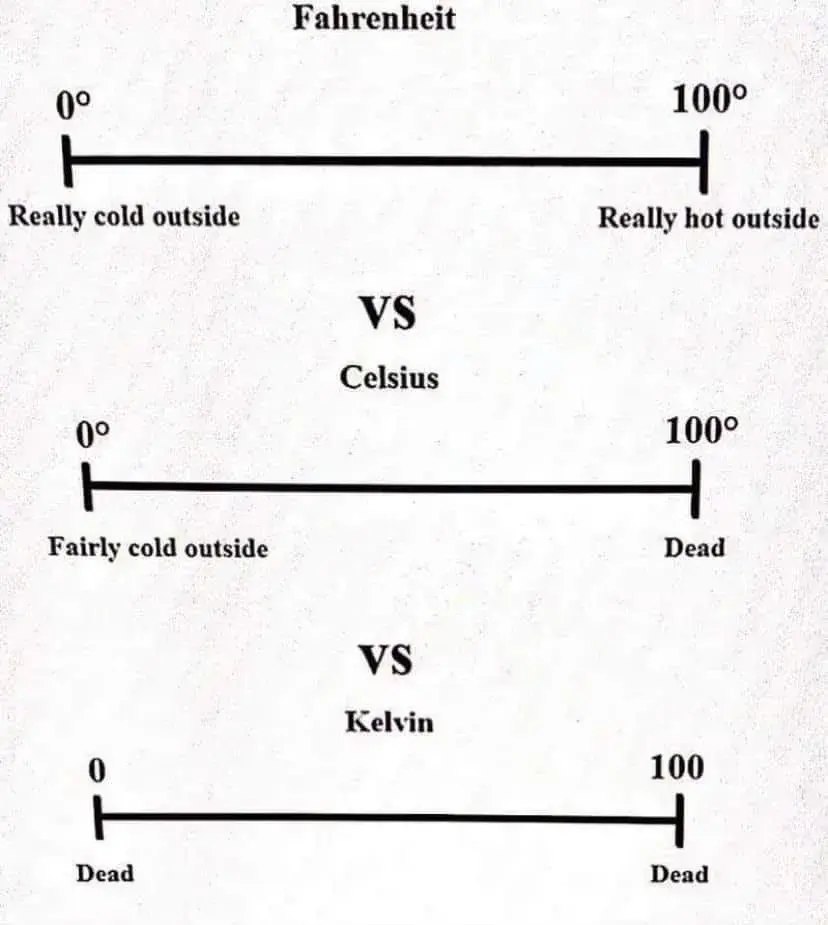this post was submitted on 12 Jun 2024
79 points (90.7% liked)
Bossfight
222 readers
1 users here now
Pictures of things that could be boss fights, any kind of picture, gif, or video may be used. Come up with a boss name for the title, and if desired add some stats and or back story in the comments. Make your title as creative as possible, something more than "lord of x", or "B'oss".
founded 1 year ago
MODERATORS
you are viewing a single comment's thread
view the rest of the comments
view the rest of the comments

That’s such an ignorant statement.
It was based on human perception of temperature.
0 being the coldest day measured and 100 the hottest. (As tested by other means)
It’s a scale based on human perception and works with whole numbers, still.
A fever of 100 vs 101 as opposed to a fever of 37.78 vs 38.3. (No, these are not fever thresholds, I’m using whole numbers as an example. Yes Fahrenheit also uses decimals. My point is graduation of measure)
Metric & SI units may be better but you’re still wrong.
According to Wikipedia Fahrenheit is not based on that, but on the freezing point of brine (0 degrees F) and an approximation of average human body temperature (100 degrees F).
That's such a stupid statement.
Also as someone mentioned below, it has nothing to do with hottest/coldest day recorded (Though that would be even worse)